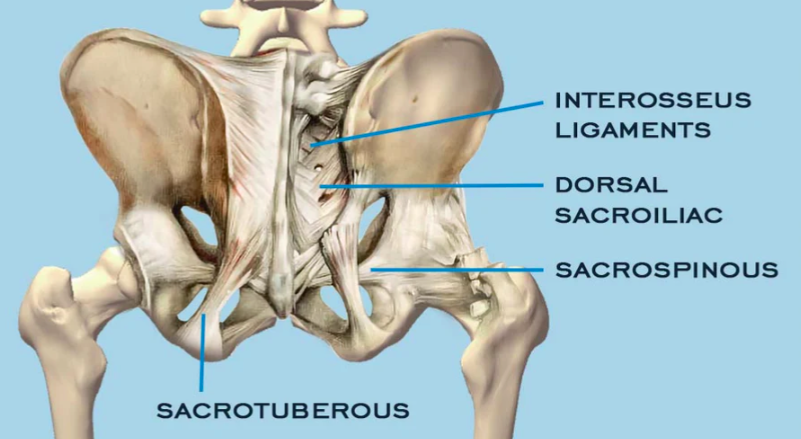SIJ Dysfunction
The sacroiliac joint (SIJ) is one of two joints in your pelvis that connect the tailbone (the sacrum) and the large pelvic bone (the ilium). The SIJ connects your spine to the pelvis, in turn , connecting the entire lower half of your body.. Like all joints, there is cartilage that covers the surfaces of the SIJ surfaces, however, the interesting thing about the SIJ however is that its cartilage has various contours causing it to fit together like a jig saw puzzle, helping to increase its stability. The SIJ is not meant to move more than 3mm. However, it is common for the SIJ to become stiff and actually ‘lock’ as we age. Inversely, we can have increase movement in the SIJ, especially during pregnancy.
Function of the SIJ
Main function appears to be providing shock absorption for the spine through stretching in various directions
May also provide a self-locking mechanism that enables you to walk. The joint locks on one side as weight is transferred from one leg to the other.
Transmits all the forces of the upper body to the pelvis (hips) and legs
Doesn’t have mush movement, so provides a stable base
What is Sacroiliac Dysfunction?
Dysfunction in the SIJ is when there is abnormal movement in the joint (either too much or too little) , which is then thought to cause low back and/or leg pain. This condition is generally more common in older adults, and women who are/were pregnant, due to hormonal changes and childbirth.
Causes
TRAUMA
The injury can come from a direct fall on the buttocks, a motor vehicle accident, or even a blow to the side of your pelvis. The force from these injuries can sprain the ligaments (strong connective tissue) around the joint. Tearing of these ligaments can lead increased movement in the joint.
PREGNANCY
Women are at increased risk for developing SI joint problems due to childbirth. During pregnancy, female hormones (Relaxin) are released that allow the connective tissues in the body to relax. This stretching of these ligaments can cause changes to the SIJ making them extra or overly mobile. Overall sacroiliac joint dysfunction arises due to too much movement at the joint, hyper mobility (pregnancy, injury) or too little movement or hypo mobility, (stiffness, age).
Signs and Symptoms
SIJ dysfunctions have numerous signs and symptoms. Following are the most common:
Back Pain – particularly low back pain
Buttock Pain
Thigh Pain
Sciatic-like Pain – Pain that travels from the sciatic nerve in the lumbar region into your buttocks, back of your thighs, and sometimes calf and foot. The pain is typically caused by irritation of the nerve roots that join outside the spine to make up the sciatic nerve. You might feel numbness, tingling or burning sensations
Difficulty sitting in one place for too long due to pain
The symptoms of back pain can be the same or very similar and can often mimic back and pelvic pain. Quite often they can also be related, as sacroiliac dysfunction is very rarely an isolated problem. Also due to its small amount of movement and its very deep position in the body, it is hard to accurately assess, making it very difficult to diagnose and distinguish from other types of low back pain.
Treatment
As sacroiliac dysfunction is rarely an isolated condition, treatment concentrates on the presenting signs and symptoms given from the assessment with your physiotherapist. Modalities that may be used during your therapy sessions include mobilisations and manipulations of the sacrum, dry needling, and trigger point therapy. Correction of the instability through strengthening and postural correction specifically through a motor program for the TA and back muscles.
As part of any rehabilitation program a home exercise program will be specifically designed aimed at improving the stability of your pelvis and back, and correction of posture, through stretches, ROM and strengthening exercises.
Like most back conditions, sacroiliac symptoms should subside with conservative treatment.




